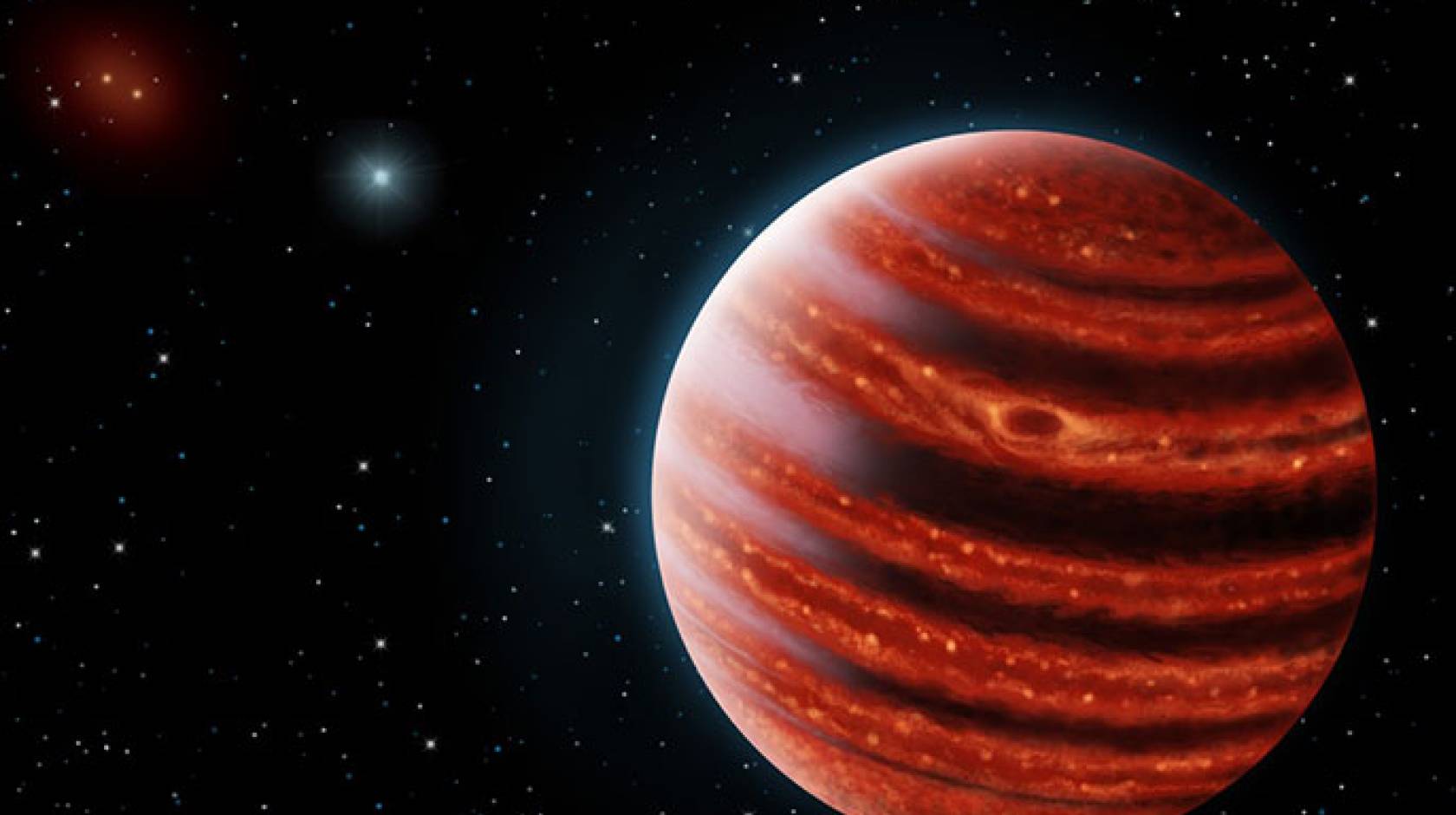University of California

A planet 100 light-years away that resembles a young Jupiter has been discovered by an international team of astronomers that includes scientists from UCLA, UC Berkeley, UC San Diego, UC Santa Cruz and Lawrence Livermore Lab. The discovery is reported Aug. 13 in the online edition of the journal Science.
The planet, called 51 Eridani b, is only 20 million years old — a mere infant by astronomy standards. (Jupiter, the sun and Earth are all about 4.5 billion years old.) It is the first planet detected by the Gemini Planet Imager, or GPI, which was designed to discover and analyze faint, young planets orbiting bright, nearby stars.
In January of this year, while analyzing GPI's initial data, UC Berkeley postdoctoral fellow Robert De Rosa first noticed something large orbiting a young star in a triple-star system only 100 light-years from Earth. He and graduate student Jason Wang summoned the GPI team, which confirmed the planet. Claire Max, UC Santa Cruz professor of astronomy and astrophysics and director of UC Observatories, led observations at the W. M. Keck Observatory that confirmed the findings.
The vast majority of solar systems that have been discovered are very different from our own, with massive planets close to their stars, said co-author James Larkin, a UCLA professor of physics and astronomy.
“Previous search methods couldn’t find systems like our own, with small, rocky worlds close to their star and large, gas giants at large distances like Jupiter and Saturn,” Larkin said. “The search for large planets at large separations from their star is exactly the goal of GPI. These solar systems are likely much more similar to our own. GPI will reveal to us how common our solar system architecture truly is.”
Picture proof
“We’re actually taking pictures of planets, rather than inferring that they’re there,” said Quinn Konopacky, an assistant professor of physics and member of the Center for Astrophysics and Space Sciences at UC, San Diego. Konopacky's main role in the GPI project is to calibrate the instrument to optimally measure the separation between the light from the star and the planet.
Larkin and colleagues at UCLA’s Infrared Laboratory for Astrophysics developed and built GPI’s highly advanced spectrometer, which enabled the instrument to detect the presence of methane on 51 Eridani b. It revealed that the planet has the strongest concentration of methane ever detected on a planet outside the Milky Way — as well as the presence of water — which indicates that it’s similar to planets in our solar system and should yield additional clues about how the planet formed.
“The exoplanet 51 Eri b is the first one that’s cold enough and close enough to the star that it could have indeed formed right where it is the ‘old-fashioned way,'” said Bruce Macintosh of Lawrence Livermore National Laboratory and Stanford University. “This planet really could have formed the same way Jupiter did – this whole planetary system could be a lot like ours.
“Many of the exoplanets astronomers have imaged before have atmospheres that look like very cool stars,” he continued. “This one looks like a planet."
The newly discovered planet orbits a little farther from its parent star than Saturn does from the sun. It is roughly twice the mass of Jupiter. Until now, the gas giant planets that have been directly detected have been much larger — five to 13 times Jupiter’s mass, said Michael Fitzgerald, UCLA associate professor of physics and astronomy.
The scientists reported that 51 Eridani b has a temperature of 800 degrees Fahrenheit, hot enough to melt lead, but still rather cold compared with other gas giants, which reach temperatures above 1,000 degrees. Previous Jupiter-like exoplanets have shown only faint traces of methane, far different from the heavy methane atmospheres of the gas giants in our solar system.
“This is exactly the kind of planet we envisioned discovering when we designed GPI,” said James Graham, a UC Berkeley professor and GPI’s project scientist.
Complex light analysis
The spectrograph produces 18 images at different wavelengths of light, which enables GPI to reject light from nearby stars, which can be up to 10 million times brighter than the planets being studied. The light from 51 Eridani b is very faint; its nearest star is 3 million times brighter.
Max and UC Santa Cruz graduate student Alex Rudy used the NIRC2 camera at Keck to observe the planet in wavelengths of light not seen by the Gemini instrument.
The team plans to begin observing the planet again in late September, when it emerges from behind the sun, and hope to find that the planet has moved along its orbit — confirmation that it is, in fact, a planet.
UC Berkeley, UCLA, UC San Diego, UC Santa Cruz and Lawrence Livermore National Laboratory contributed to this report.

